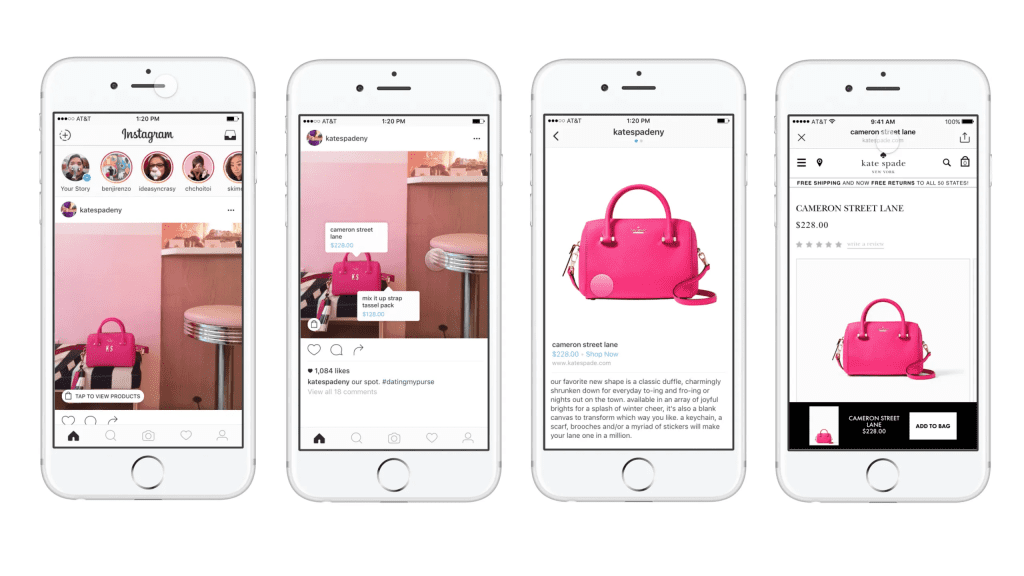Key Takeaways
- Strategic Synergy Unleashed: Explore the powerful world of brand collaboration, where strategic alliances amplify brand impact, foster credibility, and unlock new avenues for growth.
- Navigating Collaborative Seas: Gain insights into the intricate mechanics of brand collaboration—from identifying partners to execution, measuring success, and overcoming challenges for lasting impact.
- Future-Proofing with Trends: Stay ahead in modern marketing by understanding emerging trends like VR/AR integration, NFT collaborations, and sustainability initiatives, shaping the future landscape of brand collaboration.
In the dynamic realm of modern business, where competition is fierce and consumer preferences constantly evolve, brands are increasingly turning to innovative strategies to stay ahead of the curve.
One such strategy that has gained tremendous traction in recent years is brand collaboration.
But what exactly is brand collaboration, and how does it work?
In this comprehensive exploration, we’ll delve into the intricacies of this powerful marketing approach, unraveling the layers of its significance, benefits, and the nuanced mechanics that drive successful partnerships.

Why Brand Collaboration Matters in Today’s Market
In an era dominated by interconnectedness and digital saturation, brands are recognizing the potency of collaboration as a catalyst for exponential growth.
Brand collaboration transcends the traditional boundaries of solo marketing efforts, presenting a strategic alliance where two or more brands join forces to create a synergistic impact that goes beyond what each could achieve independently.
Defining Brand Collaboration: More Than a Partnership
At its core, brand collaboration is more than a mere partnership; it’s a strategic fusion of complementary entities seeking to leverage each other’s strengths, audiences, and resources.
It’s a conscious effort to break free from the constraints of standalone marketing, embracing the idea that together, brands can create a narrative that resonates more deeply with their target demographic.
Unlocking the Benefits of Brand Collaboration
The benefits of brand collaboration are far-reaching and transformative, touching every facet of a brand’s presence in the market. From heightened brand visibility to enhanced credibility and trust, the advantages are both tangible and intangible.
By collaborating, brands can tap into each other’s established audiences, exponentially expanding their reach and relevance.
Navigating the Landscape: Types of Brand Collaborations
Brand collaboration is a versatile strategy that manifests in various forms, each tailored to meet specific objectives. Whether through influencer collaborations, co-branding initiatives, or other creative alliances, brands have a myriad of pathways to explore.
In this blog, we’ll dissect the key types of brand collaborations, providing insights into how and why they work.
Peering Behind the Curtain: How Brand Collaboration Works in Practice
The mechanics of brand collaboration are intricate, involving careful planning, negotiation, and a shared vision.
From identifying potential collaborators to crafting comprehensive agreements, the journey from concept to execution is filled with nuances that can make or break a collaboration.
We’ll unravel these intricacies, offering a step-by-step guide on how brands can navigate the collaborative landscape successfully.
But, before we venture further, we like to share who we are and what we do.
About AppLabx
From developing a solid marketing plan to creating compelling content, optimizing for search engines, leveraging social media, and utilizing paid advertising, AppLabx offers a comprehensive suite of digital marketing services designed to drive growth and profitability for your business.
AppLabx is well known for helping companies and startups use digital marketing to drive web traffic to their websites and web apps.
At AppLabx, we understand that no two businesses are alike. That’s why we take a personalized approach to every project, working closely with our clients to understand their unique needs and goals, and developing customized strategies to help them achieve success.
If you need a digital consultation, then send in an inquiry here.
What is Brand Collaboration? And How Does It Work?
- Benefits of Brand Collaboration
- Types of Brand Collaborations
- How Brand Collaboration Works
- Challenges and Solutions in Brand Collaboration
- Measuring the Success of Brand Collaboration
- Future Trends in Brand Collaboration
1. Benefits of Brand Collaboration
In an era where collaboration fuels innovation, brand collaboration emerges as a powerhouse strategy with multifaceted advantages.
From bolstering brand visibility to fostering credibility, let’s delve into the myriad benefits that make brand collaboration an indispensable tool for businesses navigating the competitive landscape.

Increased Brand Visibility
Brand collaboration acts as a dynamic amplifier, propelling brands into the spotlight through shared exposure and access to diverse audiences.
Tapping into Each Other’s Audience
Collaborating brands can tap into each other’s established audiences, broadening their reach organically.
Leveraging Shared Resources
By pooling resources, brands can amplify their marketing efforts.
For instance, joint social media campaigns or co-sponsored events can significantly increase online visibility.
Enhanced Credibility and Trust
In the age of scepticism, building trust is paramount.
Collaborating with other reputable brands can lend credibility and strengthen the trustworthiness of your own.
Associating with Established Brands
Partnering with well-established brands allows for a transfer of credibility.
A study by Edelman reveals that 63 per cent of respondents aged 18-to-34 trust what an influencer says about a brand more than what the brand says about itself in advertising.
Building Social Proof
The social proof generated by brand collaboration can enhance consumer trust. When consumers see two respected brands align, it creates a powerful endorsement.
According to BrightLocal, 76% of consumers “regularly” read online reviews when browsing for local businesses, emphasizing the importance of social proof.
2. Types of Brand Collaborations
Brand collaboration is a versatile strategy that takes various forms, each tailored to meet specific objectives.
From influencer partnerships to co-branding initiatives, understanding the nuances of these collaborations is crucial for businesses aiming to harness the full potential of strategic alliances.

Influencer Collaborations
Influencer marketing has become a cornerstone of brand collaboration, leveraging the reach and credibility of influencers to connect with target audiences.
Leveraging Social Media Platforms
According to a report, 79% of marketers consider Instagram the most important influencer marketing hub for their business.
Choosing the Right Influencers for Your Brand
The choice of influencers is critical. Micro-influencers, with a more niche audience, often yield higher engagement rates. A study found that as an influencer’s follower count increases, the engagement rate tends to decrease.
Co-Branding Collaborations
Co-branding involves two or more brands coming together to create a product or service, leveraging the strengths and attributes of each brand.
Definition and Examples
A classic example of co-branding is the partnership between Nike and Apple, resulting in the creation of the Nike+ Apple Watch.
This collaboration seamlessly merged fitness tracking technology with athletic footwear, catering to a health-conscious and tech-savvy consumer base.

Mutual Benefits of Co-Branding
Co-branding allows brands to share resources and costs, expanding market reach.
Cross-promotions and Giveaways
Collaborations centred around giveaways and cross-promotions can be highly effective in enhancing brand visibility and engaging audiences.
Strategic Cross-Promotions
Brands can collaborate on joint promotional campaigns, reaching each other’s audiences.
This approach not only increases visibility but also fosters a sense of excitement.
Engaging Giveaways
Giveaways, when done strategically, can amplify brand awareness.
Collaborating brands can host joint giveaways, encouraging participants to engage with both brands.
The viral nature of giveaways can lead to exponential growth in social media reach.
Data from Tailwind suggests that an Instagram contest or giveaway can help you grow your followers 70% faster in three months than if you didn’t host a contest at all.
Event Collaborations
Collaborating on events provides brands with a platform to share resources, reach a wider audience, and create memorable experiences.
Hosting Joint Events
By hosting events together, brands can pool resources for a larger impact. A study found that 95% of event marketers believe that live events provide valuable opportunities for attendees to form in-person connections in an increasingly digital world.
Sponsorship and Participation
Participating in or sponsoring each other’s events can enhance brand visibility. 74% of consumers say that engaging with branded event marketing experiences makes them more likely to buy the products being promoted.
3. How Brand Collaboration Works
Understanding the mechanics of how brand collaboration works is essential for businesses looking to navigate the intricate process of forming successful partnerships.
From identifying potential collaborators to negotiating and executing agreements, let’s explore the step-by-step journey of bringing brand collaborations to life.

Identifying Potential Collaborators
The first crucial step in brand collaboration is identifying suitable partners that align with your brand values and objectives.
Researching Compatible Brands
Conduct market research to identify brands that share a similar target audience and values.
According to a survey, 82% of shoppers want a brand’s values to align with their own, making alignment on values a critical factor in collaboration success.
Assessing Alignment of Values and Objectives
Successful collaborations hinge on shared values and objectives.
For example, the partnership between TOMS Shoes and Target emphasized a commitment to social responsibility.
TOMS’ “One for One” model and Target’s corporate social responsibility goals created a harmonious collaboration, benefitting both brands.

Negotiating and Planning
Once potential collaborators are identified, the negotiation and planning phase becomes paramount to ensure a mutually beneficial partnership.
Establishing Clear Goals and Expectations
Clearly define the goals and expectations of the collaboration.
Whether aiming for increased brand visibility, product co-creation, or reaching a new audience, aligning objectives is crucial. 70% of B2B marketers with a documented strategy consider themselves successful.
Creating a Mutually Beneficial Agreement
Craft a comprehensive agreement that outlines the terms, responsibilities, and benefits for each party. This legally binding document ensures that both collaborators are on the same page.
The Nike and Apple collaboration mentioned earlier is an example of a collaboration that succeeded through a well-defined agreement, leading to the creation of the Nike+ Apple Watch.
Execution and Implementation
With agreements in place, the collaborative vision begins to take shape through the execution of planned initiatives.
Leveraging Digital Platforms
In today’s digital age, executing collaborations often involves leveraging online platforms. Social media, in particular, serves as a powerful tool for collaboration visibility.
In 2022, over 4.59 billion people were using social media worldwide, emphasizing the vast potential for online collaboration visibility.
Creating Engaging Content
Content creation is a key component of collaboration execution.
Whether through joint social media campaigns, co-branded content, or shared blog posts, engaging content enhances collaboration impact.
Content marketing generates three times as many leads as traditional outbound marketing, but costs 62% less, underscoring the importance of content in collaboration execution.
Measuring Success and Adjusting Strategies
To ensure the longevity and effectiveness of a collaboration, it’s imperative to measure its success using key performance indicators (KPIs).
Social Media Metrics
Track social media engagement metrics such as likes, shares, and comments to gauge the collaboration’s impact.
Social media analytics tools can provide insights into audience reach and sentiment.
Sales and Revenue Impact
Measure the collaboration’s impact on sales and revenue.
This can be assessed through unique discount codes, affiliate marketing, or tracking sales during the collaboration period.
4. Challenges and Solutions in Brand Collaboration
While brand collaborations offer numerous benefits, navigating the collaborative landscape is not without its challenges.
Understanding these obstacles and implementing effective solutions is crucial for ensuring the success and sustainability of strategic partnerships.

Common Pitfalls to Avoid
Identifying potential challenges is the first step in crafting a resilient collaboration strategy.
Misalignment of Brand Values
One of the most common pitfalls is a misalignment of brand values.
According to a study, 62% of customers want companies to take a stand on current and broadly relevant issues like sustainability, transparency, or fair employment practices.
Brands that fail to align on values risk facing consumer backlash.
Poor Communication
Communication breakdowns can derail collaborations.
Addressing challenges head-on requires strategic planning and proactive measures.
Effective Communication Channels
Establishing clear communication channels is paramount.
Regular check-ins, collaborative project management tools, and transparent communication contribute to a smoother collaboration process.
Creating a Comprehensive Agreement
Crafting a comprehensive agreement can mitigate misalignment issues.
Clearly outline expectations, responsibilities, and the scope of the collaboration in a legally binding document.
Budgetary Constraints and Resource Allocation
Financial considerations can pose significant challenges, especially for smaller businesses entering collaborations.
Setting Realistic Budgets
Collaborating brands should set realistic budgets that accommodate shared expenses.
Exploring Cost-Sharing Models
To overcome budgetary constraints, brands can explore cost-sharing models where expenses are distributed proportionally. This approach ensures a fair financial burden and aligns incentives.
Legal and Contractual Challenges
Navigating legal complexities is essential to safeguarding the interests of all parties involved.
Intellectual Property Concerns
Intellectual property (IP) disputes can arise, especially in co-branded collaborations.
Clearly define IP ownership and usage rights in the collaboration agreement.
Seeking Legal Expertise
Engaging legal experts during the agreement phase is crucial.
Their expertise can help anticipate and address potential legal challenges.
Managing Differing Brand Strategies
Collaborating brands may have differing long-term strategies, leading to conflicts in execution.
Aligning on Long-Term Objectives
Collaborators should align on long-term objectives from the outset.
Flexibility and Adaptability
Building flexibility into collaboration plans allows brands to adapt to evolving strategies.
5. Measuring the Success of Brand Collaboration
In the dynamic landscape of modern marketing, where collaborations between brands abound, measuring the success of brand collaborations is paramount.
Understanding key performance indicators (KPIs) and implementing effective measurement strategies ensures that collaborative efforts not only resonate with the target audience but also contribute to tangible business outcomes.

Key Performance Indicators (KPIs) for Brand Collaboration
Determining the success of a brand collaboration requires a careful examination of specific metrics that align with collaboration objectives.
Social Media Metrics
Track social media engagement metrics such as likes, shares, comments, and follower growth.
Website Traffic and Conversions
Analyze website traffic and conversion rates during and after the collaboration period. Tools like Google Analytics can provide insights into user behavior.

Leveraging Social Media Analytics for Collaboration Impact
Social media platforms play a pivotal role in brand collaborations, making it essential to dive deeper into the metrics associated with these channels.
Engagement Rates
Assess the engagement rates on collaborative content, including likes, comments, and shares. The average branded engagement rate on Instagram hovers around 1.22%, underscoring the importance of tracking these interactions.
Reach and Impressions
Measure the reach and impressions of collaborative posts to gauge the extent of audience exposure.
In 2023, Instagram is currently ranked 4th out of all social media networks worldwide, with over 2 billion people using the app each month, making it a powerful platform for collaboration visibility.
Sales and Revenue Impact Assessment
Ultimately, the success of a brand collaboration often ties back to its impact on sales and revenue.
Unique Discount Codes
Utilize unique discount codes to track sales directly attributed to the collaboration.
Affiliate Marketing Metrics
Implement affiliate marketing strategies to track sales generated through collaborative efforts.
Continuous Improvement and Iteration
Measuring success is not a one-time task but an ongoing process that involves continuous improvement based on insights gathered.
Customer Surveys and Feedback
Collect feedback from customers through surveys to understand their perception of the collaboration.
Iterative Strategy Refinement
Use the gathered data and feedback to refine future collaboration strategies.
Iterative refinement is crucial for staying relevant and resonating with evolving consumer preferences.
According to a study, 91% of consumers are more likely to shop with brands that can recognize and provide relevant offers and recommendations.
6. Future Trends in Brand Collaboration
As the marketing landscape continues to evolve, brand collaborations are set to embrace future trends that go beyond conventional partnerships.
From the integration of emerging technologies to novel collaboration platforms, this in-depth exploration delves into the exciting future of brand collaborations.

Emerging Technologies Shaping Collaborative Experiences
The integration of cutting-edge technologies is poised to redefine brand collaborations, offering immersive and innovative experiences for consumers.
Virtual and Augmented Reality (VR/AR) Collaborations
Expect an influx of collaborations leveraging VR and AR technologies to create immersive experiences.
These technologies provide brands with opportunities to engage audiences in virtual spaces.
According to Statista, the AR & VR market worldwide is projected to grow by 12.6% (2023-2028) resulting in a market volume of US$58.1 billion in 2028.
Example: Virtual Try-Ons – Beauty brands could collaborate with AR platforms to offer virtual try-on experiences, allowing customers to experiment with products before making a purchase.

NFTs and Digital Collaborations:
The rise of non-fungible tokens (NFTs) has opened up new possibilities for digital collaborations, allowing brands to create unique and collectible digital assets.
NFTs in Brand Collaborations
Brands may explore NFT collaborations to create exclusive digital content, limited edition virtual goods, or digital art.
In 2021, the NFT space generated over $23 billion in trading volume.
Example: Digital Fashion Collaborations – Fashion brands could partner with digital artists to create exclusive virtual fashion collections, accessible to consumers as NFTs.

Sustainability and Purpose-Driven Collaborations:
Future collaborations are expected to place a greater emphasis on sustainability and purpose-driven initiatives, aligning with the values of socially conscious consumers.
Eco-Friendly Collaborations
Brands may collaborate on eco-friendly initiatives, such as sustainable product lines or joint efforts to reduce carbon footprints. 73% of Gen Z consumers surveyed were willing to pay more for sustainable products.
Example: Sustainable Fashion Alliances – Fashion brands may join forces to create sustainable clothing lines, emphasizing ethical sourcing and eco-friendly production practices.

Integration of E-commerce and Social Commerce:
The synergy between e-commerce and social commerce is anticipated to drive collaborative efforts, providing seamless shopping experiences for consumers.
Shoppable Social Media Collaborations
Collaborations will increasingly integrate shoppable features on social media platforms, allowing users to make direct purchases.
Example: Instagram Shopping Collaborations – Brands could collaborate on exclusive products, leveraging Instagram’s shopping features to facilitate direct purchases within the app.

Personalized and Data-Driven Collaborations:
Advancements in data analytics and artificial intelligence (AI) will enable brands to create personalized collaborations based on consumer preferences and behaviour.
AI-Driven Personalization
Collaborations may leverage AI algorithms to analyze customer data and deliver personalized products or experiences.
Example: Customized Subscription Boxes – Brands could collaborate to offer personalized subscription boxes curated based on individual preferences, using AI-driven insights.
Influencer Collaborations Evolving with Nano and Micro-Influencers:
While influencer collaborations are not new, the focus is shifting towards nano and micro-influencers for more targeted and authentic connections with audiences.
Nano and Micro-Influencer Collaborations
Brands may increasingly collaborate with smaller influencers who have niche and highly engaged audiences. Micro-influencers participate in “buying conversations” that include product recommendations 22.2 times more than the average consumer weekly.
Example: Localized Product Launches – Brands might collaborate with local micro-influencers to launch products in specific regions, leveraging their authentic influence within local communities.
Conclusion
In the ever-evolving realm of modern marketing, where innovation is the lifeblood of success, brand collaboration stands tall as a formidable strategy, weaving a narrative of synergy and strategic alliances.
Unlocking the Essence of Brand Collaboration
At its core, brand collaboration is more than a tactical manoeuvre—it’s a strategic dance where brands unite, leveraging each other’s strengths, audiences, and resources to craft a narrative that resonates deeply with their shared demographic.
It’s an artful fusion of creativity, shared values, and mutual benefit that extends beyond the confines of standalone marketing efforts.
The Strategic Imperative of Collaboration
Why does brand collaboration matter in today’s market?
The answer lies in its ability to harness the power of interconnectedness and digital saturation.
In an age where consumers seek authenticity and meaningful connections with brands, collaboration emerges as a strategic imperative.
The benefits, ranging from increased brand visibility to enhanced credibility, create a paradigm shift in how brands approach their market presence.
Navigating the Collaborative Landscape
Our exploration ventured into the diverse types of brand collaborations, shedding light on the versatility that this strategy offers.
From influencer collaborations amplifying social media reach to co-branding initiatives creating innovative products, the collaborative landscape is rich with possibilities.
The Intricacies of Collaboration Mechanics
Delving into the mechanics of how brand collaboration works, we uncovered a step-by-step journey—from identifying potential collaborators to negotiating and executing agreements.
As digital platforms play an increasingly pivotal role, the execution of collaborations involves leveraging online spaces, creating engaging content, and measuring success through social media metrics and tangible business outcomes.
Challenges and Solutions: Navigating the Collaborative Seas
No exploration of brand collaboration is complete without acknowledging the challenges that may arise.
We dissected common pitfalls, such as misalignment of brand values and poor communication, offering strategic solutions such as effective communication channels and comprehensive agreements.
Addressing budgetary constraints, and legal complexities, and managing differing brand strategies became integral components of our roadmap to collaborative success.
Measuring Success: A Multifaceted Approach
As we delved into measuring the success of brand collaborations, the importance of key performance indicators (KPIs) became evident.
From social media engagement metrics to sales and revenue impact, brands must adopt a multifaceted approach for holistic assessment.
Real-world examples like Nike x Off-White and Spotify x Starbucks provided tangible insights into effective measurement strategies.
Peering into the Collaborative Future: Trends and Innovations
The final leg of our journey is projected into the future, exploring trends that are set to shape the collaborative landscape.
From the integration of emerging technologies like VR/AR to the rise of NFTs and digital collaborations, the future promises an array of possibilities.
Sustainability, personalized experiences, and the evolution of influencer collaborations toward nano and micro-influencers are heralding a new era of innovation in brand collaborations.
If you are looking for a top-class digital marketer, then book a free consultation slot here.
If you find this article useful, why not share it with your friends and business partners, and also leave a nice comment below?
We, at the AppLabx Research Team, strive to bring the latest and most meaningful data, guides, and statistics to your doorstep.
To get access to top-quality guides, click over to the AppLabx Blog.
People also ask
What are the different types of brand collaboration?
Brand collaborations take diverse forms, including influencer partnerships, co-branded products, content collaborations, and cause-related alliances. From leveraging each other’s audiences to creating innovative products, these collaborations drive brand synergy and amplify market impact.
How does influencer collaboration work?
Influencer collaboration involves partnering with social media influencers to promote products or services. Brands benefit from the influencer’s established audience, gaining authentic exposure and trust. The influencer creates content aligning with the brand, fostering engagement and driving awareness.
How does brand collaboration work on Facebook?
Brand collaboration on Facebook involves strategic partnerships to co-create content, share audiences, or run joint campaigns. Brands can leverage each other’s followers, increase visibility, and enhance engagement through collaborative posts, events, or promotions on the platform.




































